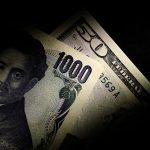
At 10:30 ET (14:30 GMT), USD/JPY traded 0.1% higher at ¥155.64, just below the ¥160 level seen last week – the yen’s weakest level against the dollar in 34 years.
This weakness comes despite Japanese authorities spending what’s believed to be some $60 billion last week propping up their currency.
Additionally, the Bank of Japan issued its strongest warning to date on Wednesday, with governor Kazuo Ueda stating that it may take monetary policy action if yen falls affect prices significantly.
UBS has taken a look at the period from 2006-2007, when the yen was also under pressure with U.S. yields high and carry-trading in full swing.
The Swiss bank noted that when U.S. yields reached highly attractive levels (e.g., >5%) compared to low Japanese yields, global carry-trades continued to push USD/JPY higher, even when the Fed kept policy rates unchanged.
Additionally, when the Bank of Japan finally started to hike rates (by 25bps each in July 2006 and February 2007), it sparked pullbacks in USD/JPY, but failed to reverse the forces of global yield-carry trading.
Finally, the pairing peaked in June 2007, three months before the first Fed rate cut in September 2007. This is because markets tend to move in advance, once U.S. data began to weaken.
This suggests that as long as U.S. data remain strong, thus dampening expectations for Fed rate cuts, there will be upward pressure on USD/JPY. That said, we also think it is becoming harder for markets to push the pairing higher, as the exchange rate has reached pain thresholds for Japanese officials.
Moreover, the level of net-short JPY positioning is testing record levels last seen in 2007, which also coincided with a peak in USD/JPY.
“In this context, we keep our view for a medium-term decline in USD/JPY,” the bank said. “We expect the Fed to cut rates starting in September, and the BoJ to hike rates either in July or October, with more tightening likely in 2025. A narrowing of the yield differential should put downward pressure on the pairing, in line with what happened in 2007.”
The bank expects USD/JPY to fall to ¥148 by the end of the year, saying a move up to ¥160 should again attract potential FX intervention.
That said, if strong U.S. data compels the Federal Reserve to hike rates this year, then USD/JPY is likely to break above 160.
To read the full article, Click Here

